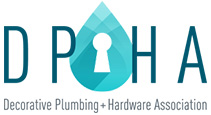
A Beginners Guide To Understanding How B2B eCommerce
Is A Game-Changer For The Kitchen And Bath Industry…

A Beginners Guide To Understanding How B2B ECommerce Is A Game-Changer For The Kitchen And Bath Industry…
Today many companies in the design/build, showroom and construction industry at-large are moving towards B2B eCommerce platforms to improve their businesses. These platforms allow different departments within a business the ability to work in unison and mostly without attendance. This helps to eliminate a lot of the tedious employee legwork and cut back on a significant amount of non-revenue generating hours behind the scenes. The overall goal of an eCommerce platform is to expand the overall reach, response rates, return on investment and how you report the results to the customers while reducing the costs to do so.
What is a B2B eCommerce Platform?
B2B eCommerce platforms have taken off in just about every business who calls “account acquisition” the name of their game. And with the B2C eCommerce trend a massive success, why wouldn’t it and shouldn’t it be?
Similar to many B2C platforms, here are some primary benefits of B2B eCommerce platforms:
- Facilitating online selling faster and more efficiently
- Reducing time-consuming tasks on the back end
- Reducing risks for human error
- Streamlining the purchasing process
- Increasing delivery speed times
- Synching with business development initiatives
- Automating the process for getting 5-star reviews
Buyers want a streamlined process. They want to go straight to one source to make a purchase, and with as little hassle as possible. They also prefer their “customer journey” to be predictable and as effortless as possible. Therefore, early adopters who employ even the most basic elements of a B2B eCommerce platform will benefit greatly if they learn how to use them correctly. Failing to do so can leave them in the dust of their competition, cause them to lose control of market share, and much more.
How Does a B2B eCommerce Platforms Impact the Kitchen and Bath Industry?
As B2B eCommerce platforms continue to become more efficient, companies will win more business, operate more efficiently, and streamline sales and marketing processes.
How exactly are they going to do that, you ask?
Restock Inventory
While working with different partner systems and software, B2B eCommerce platforms can access their programs to monitor sales and inventory. For example, if a kitchen and bath company is running low or has run out of a specific sink straps, brand of bathroom faucet, or even a specific sink model, B2B eCommerce software can automatically request additional units, allowing sales associates to focus more on caring for customers and generating sales than getting caught up in maintenance activities.
Streamline Order Processing
B2B eCommerce platforms also facilitate customer orders, freeing up sales associates from taking customer orders over the phone or email. By automating customer ordering and processing, sales associates can focus on building and nurturing customer relationships. Furthermore, B2B eCommerce platforms have the power to store all customer purchase history, which will carry over into more personalized shopping—and a better user experience.
Gather Better Data
The beauty of eCommerce platforms is you can see what is working and what isn’t. This gives you the ability to apply your budget accordingly and invest more in the areas that are generating desirable results.
With most B2B eCommerce platforms, you can get a complete behind-the-scenes look at your customers’ navigation habits. For example, if they are spending more time on certain pages, or different calls to action are working better than others, you’ll know this and can make appropriate changes on your website design, user experience or course corrections with your outreach efforts, while managing accounts.
Solve Customer Challenges
As mentioned above, eCommerce platforms greatly reduce the room for human error. By streamlining the purchase, the order, and/or delivery processes, customers aren’t dealing with nearly as many errors in their shopping experience. Since B2B customers usually deal with larger orders and potentially may even know the personnel involved with their orders. Reducing these errors and mistakes will be a huge benefit to your business.
Improve the User Experience
Other benefits that both the buyer and seller will experience from a highly robust eCommerce platform are things like ease of payment, chatbots, artificial intelligence and virtual reality (VR).
AI and VR give the buyer as close to an actual walkthrough as possible. Both of these can highly influence their purchase decisions as they allow buyers to see how a product looks in a showroom or in a customer’s home.
Personalize the User Experience
When it comes to the kitchen and bath industry, a robust B2B eCommerce platform can be an absolute game-changer. Along with improving the user experience, B2B eCommerce platforms allow for more of a personalized experience for the consumers as well. With all the specific shopping patterns and customer information held within these platforms, it’s very easy to make the marketing and other communication from the business to the customer not only informative, but directed at them specifically.
Reach New Customers
Since these platforms are online and public, it’s easy to market your platform so that you can increase your audience. The more you’re pushing your brand and the platform, the larger the net you can cast. A strategy that has worked nicely involves partnering and gaining support from buying groups and manufacturers so that the process of being more internet equipped isn’t a lonely one.
Upsell to Customers
Sure, all the benefits listed above will contribute to increased revenue, but an eCommerce platform will allow you to upsell to your customers. These platforms give you the ability to add additional programs to your site and make suggestions to the customer based on purchase history.
For example, if your potential customer is reviewing a certain sink fixture, you will be able to suggest a different piece for them to compare side by side. Strategies like the one just mentioned have become very popular and attractive to manufacturers. Think about it: If a business is already doing their own homework and investing in business development through the web, why would we (as a manufacturer) not want to ‘boost’ your efforts along and increase your reach, response rate and return on investment at the same time 🙂
The ShowroomMarketing.Com Method™ Has Worked Flawlessly With
These Websites & B2B eCommerce Software Platforms Since 2013!

5 Steps for Rolling Out a B2B eCommerce Platform
Step 1: Establish a Project Team – Though the platform is going to do a lot of the work for you, and is pretty much “plug-and-play”, there are still some steps to follow to ensure that monitoring assignments are in place. Assemble a project team to help adopt, set up, and implement a B2B eCommerce platform. By carefully choosing a team to implement the process, you will increase your chances of having a successful working platform.
Step 2: Organize Your Data – By uploading your previous data from past purchases, you can provide your clients with a custom user experience. You will also be able to pull reports related to eCommerce performance as well as gather key insights related to buyer purchase behavior to predict possible future trends.
Step 3: Introduce to Your Clients – Once you have your team in line, data uploaded and organized, and reporting structures, it’s time to introduce the platform to clients and make sure you’re promoting it anywhere and everywhere.
Step 4: Maximize Marketing Potential – In addition to introducing your new B2B eCommerce platform to your customer base, it’s also important to market it to brand new customers. This is where you take it to the next level. Create email marketing campaigns announcing the launch of your new platform, and consider offering a “grand opening” code for a discount to get customers excited about trying out your new platform. Be sure to also share “How to” guides, company imagery, and add consistent content to reflect your brand.
If you aspire to get more inquiries, grow sales and control more market-share online and off, clicking this link will reveal your fastest path to getting unstuck and dominating your market-place in the business-to-business (B2B) and business-to-consumers (B2C) market https://showroommarketing.com/blog/the-4-dimensions-of-winning-with-online-search-for-a-bath-or-kitchen-showroom/
Step 5: Measure Performance – Constantly monitoring data and adjusting the platform appropriately is the only way you are going to be able to utilize your platform to its fullest potential. So don’t skip this step! Set a recurring schedule to pull reports, review them with your team, and iterate, iterate, iterate!
If you’re not sure what metrics and statistics you should be measuring, this blog that I wrote and published on Bravo Business Media’s website sums things up nicely bravobusinessmedia.com/10-metrics-that-matter-most-for-your-showroom-business.
The time to future-proof your kitchen and bath business and create predictable revenue is now.
As always, best of luck making the most insightful decisions for your business!













